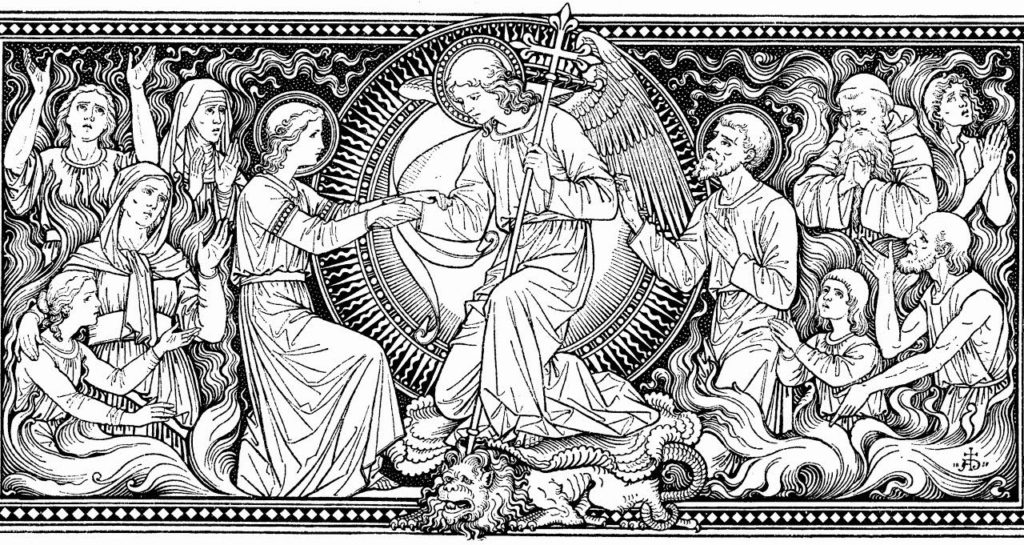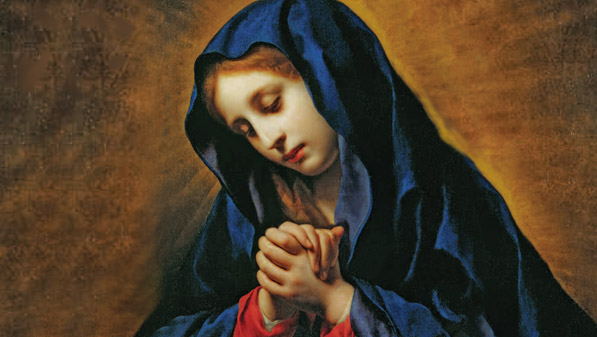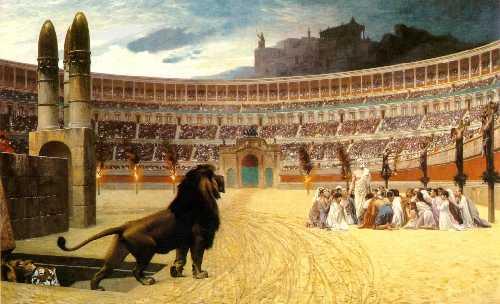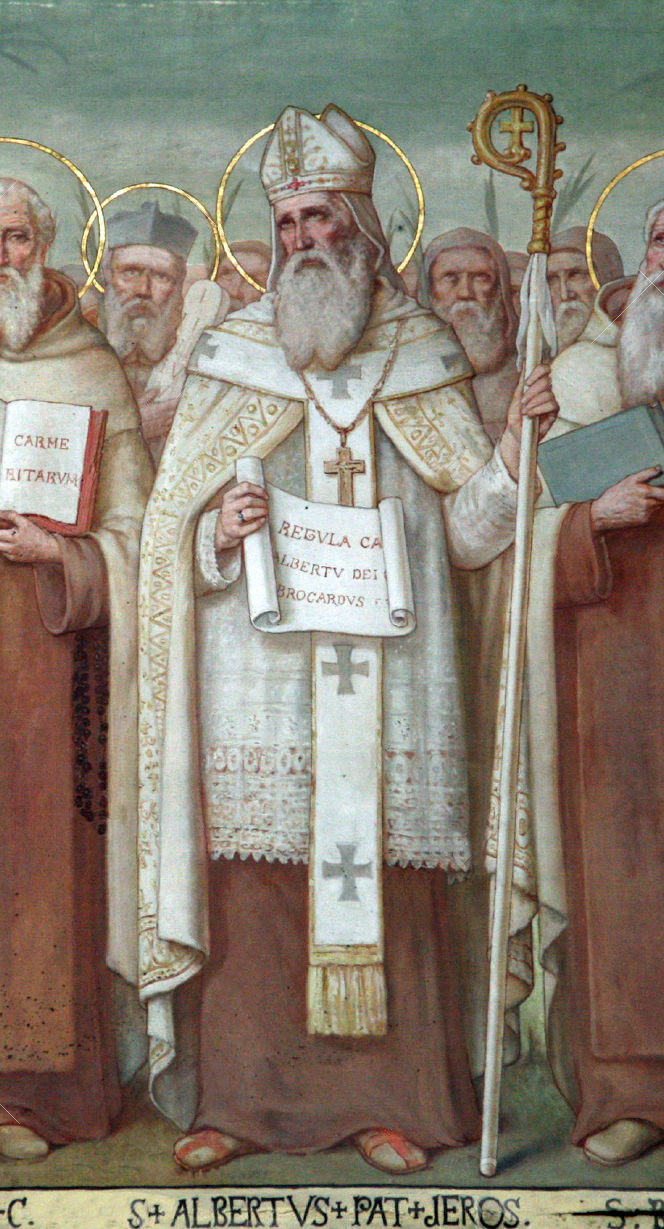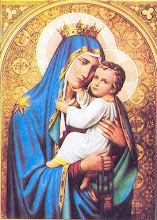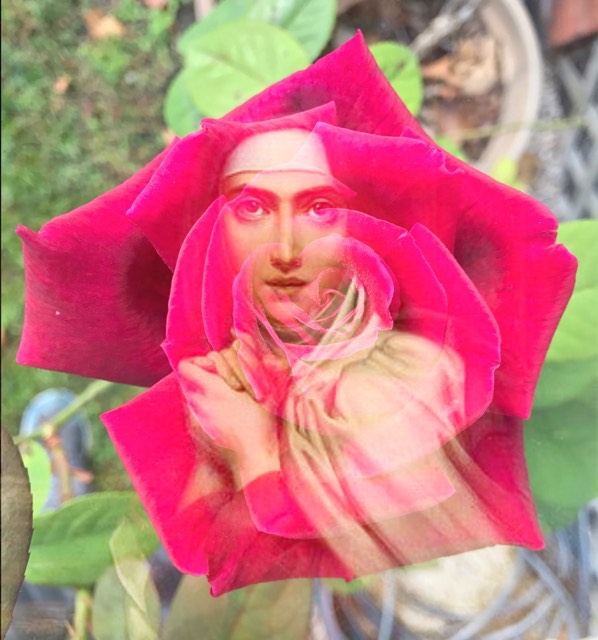The ancient dome of heaven sheer
Was pricked with distant light;
A star came shining white and clear
Alone above the night.
In the dale of dark in that hour of birth
One voice on a sudden sang:
Then all the bells in Heaven and Earth
Together at midnight rang.
Mary sang in this world below:
They heard her song arise
O’er mist and over mountain snow
To the walls of Paradise,
And the tongue of many bells was stirred
in Heaven’s towers to ring
When the voice of mortal maid was heard,
That was mother of Heaven’s King.
Glad is the world and fair this night
With stars about its head,
And the hall is filled with laughter and light,
And fires are burning red.
The bells of Paradise now ring
With bells of Christendom,
And Gloria, Gloria we will sing
That God on earth is come.
(Read more.)
Saturday, December 30, 2023
Tolkien's Poem to Our Lady
Friday, December 29, 2023
"The Holy Blissful Martyr"
Today is the feast of St. Thomas Becket, who was killed not by pagans but by his own Catholic brethren. To quote:
A strong man who wavered for a moment, but then learned one cannot come to terms with evil, and so became a strong churchman, a martyr, and a saint—that was Thomas Becket, archbishop of Canterbury, murdered in his cathedral on December 29, 1170. His career had been a stormy one. While archdeacon of Canterbury, he was made chancellor of England at the age of 36 by his friend King Henry II. When Henry felt it advantageous to make his chancellor the archbishop of Canterbury, Thomas gave him fair warning: he might not accept all of Henry’s intrusions into Church affairs. Nevertheless, in 1162 he was made archbishop, resigned his chancellorship, and reformed his whole way of life!
Troubles began. Henry insisted upon usurping Church rights. At one time, supposing some conciliatory action possible, Thomas came close to compromise. He momentarily approved the Constitutions of Clarendon, which would have denied the clergy the right of trial by a Church court and prevented them from making direct appeal to Rome. But Thomas rejected the Constitutions, fled to France for safety, and remained in exile for seven years. When he returned to England he suspected it would mean certain death. Because Thomas refused to remit censures he had placed upon bishops favored by the king, Henry cried out in a rage, “Will no one rid me of this troublesome priest!” Four knights, taking his words as his wish, slew Thomas in the Canterbury cathedral. (Read more.)
Thursday, December 28, 2023
Childermas Day
Medieval writers were honest and clear-eyed about such uncomfortable truths. The idea that thoughts like these are incongruous with the Christmas season (as you often hear people say about the Holy Innocents) is largely a modern scruple, encouraged by the comparatively recent idea that Christmas is primarily a cheery festival for happy children and families. Our images of Christmas joy, both secular and sacred, are all childlike wonder and picture-perfect families gathered round the tree. And this is nice, of course, for those who have children or happy families, but for those who don't - those who have lost children or parents or others dear to them, those who face loneliness or exclusion, those who want but don't have children, family, or home - it can be intensely painful. Not everyone can choose not to think about grief at Christmas; many people will find it intrudes upon them, whether they wish it to or not. 'In sorrow endeth every love but thine, at the last'. The modern version of Christmas tends to sideline and ignore that pain, asking it to at least keep quiet so as not to spoil the 'magic'. But that's not the case with medieval writing about Christmas and the Christ-child. There are, of course, many merry and joyful medieval carols, and the season was celebrated in the Middle Ages with great enthusiasm; but there are also many carols like this which are serious, melancholy, and sad, which acknowledge the fact that the child whose birth is celebrated came to earth to die. Older writings on Christmas, like this lullaby, do not exclude but encompass human pain - it's that pain, they say, which Christ has come to earth to share. The idea is well expressed by John Donne, writing a little later than the medieval period (though only a few decades after the Coventry mystery plays were abolished), in a sermon he preached on Christmas Day 1626:
The whole life of Christ was a continual passion; others die martyrs, but Christ was born a martyr. He found a Golgotha, where he was crucified, even in Bethlehem, where he was born; for, to his tenderness then, the straws were almost as sharp as the thorns after; and the manger as uneasy at first, as his cross at last. His birth and his death were but one continual act, and his Christmas Day and his Good Friday are but the evening and morning of one and the same day.(Read more.)
Sunday, December 24, 2023
Alma Redemptoris Mater
Loving mother of the Redeemer, gate of heaven, star of the sea, assist your people who have fallen yet strive to rise again, To the wonderment of nature you bore your Creator, yet remained a virgin after as before, You who received Gabriel's joyful greeting, have pity on us poor sinners.
(Image: Virgin of Vladimir)
Saturday, December 9, 2023
Saint Juan Diego
Most historians agree that Juan Diego was born in 1474 in the calpulli or ward of Tlayacac in Cuauhtitlan, which was established in 1168 by Nahua tribesmen and conquered by the Aztec lord Axayacatl in 1467; and was located 20 kilometers (14 miles) north of Tenochtitlan (now Mexico City).
His native name was Cuauhtlatoatzin, which could be translated as "One who talks like an eagle" or "eagle that talks". The Nican Mopohua describes him as a 'macehualli' or "poor Indian", one who did not belong to any of the social categories of the Empire, as priests, warriors, merchants,...but not a slave; a member of the lowest and largest class in the Aztec Empire. When talking to Our Lady he calls himself "a nobody", and refers to it as the source of his lack of credibility before the Bishop....(Read more.)
Tuesday, December 5, 2023
St. John Damascene and the "Ishmaelites"
They furthermore accuse us of being idolaters, because we venerate the cross, which they abominate. And we answer them: ‘How is it, then, that you rub yourselves against a stone in your Ka’ba [107] and kiss and embrace it?’ Then some of them say that Abraham had relations with Agar upon it, but others say that he tied the camel to it, when he was going to sacrifice Isaac. And we answer them: ‘Since Scripture says that the mountain was wooded and had trees from which Abraham cut wood for the holocaust and laid it upon Isaac, [108] and then he left the asses behind with the two young men, why talk nonsense? For in that place neither is it thick with trees nor is there passage for asses.’ And they are embarrassed, but they still assert that the stone is Abraham’s. Then we say: ‘Let it be Abraham’s, as you so foolishly say. Then, just because Abraham had relations with a woman on it or tied a camel to it, you are not ashamed to kiss it, yet you blame us for venerating the cross of Christ by which the power of the demons and the deceit of the Devil was destroyed.’ This stone that they talk about is a head of that Aphrodite whom they used to worship and whom they called Khabár. Even to the present day, traces of the carving are visible on it to careful observers. (Read more.)
Saturday, December 2, 2023
History of Advent
We must look upon Advent in two different lights: first, as a time of preparation, properly so called, for the birth of our Saviour, by works of penance; and secondly, as a series of ecclesiastical Offices drawn up for the same purpose. We find, as far back as the fifth century, the custom of giving exhortations to the people in order to prepare them for the feast of Christmas. We have two sermons of Saint Maximus of Turin on this subject, not to speak of several others which were formerly attributed to St. Ambrose and St. Augustine, but which were probably written by St. Cesarius of Aries. If these documents do not tell us what was the duration and what the exercises of this holy season, they at least show us how ancient was the practice of distinguishing the time of Advent by special sermons. Saint Ivo of Chartres, St. Bernard, and several other doctors of the eleventh and twelfth centuries, have left us set sermons de Adventu Domini, quite distinct from their Sunday homilies on the Gospels of that season. In the capitularia of Charles the Bald, in 846, the bishops admonish that prince not to call them away from their Churches during Lent or Advent, under pretext of affairs of the State or the necessities of war, seeing that they have special duties to fulfill, and particularly that of preaching during those sacred times.
The oldest document in which we find the length and exercises of Advent mentioned with anything like clearness, is a passage in the second book of the History of the Franks by St. Gregory of Tours, where he says that St. Perpetuus, one of his predecessors, who held that see about the year 480, had decreed a fast three times a week, from the feast of St. Martin until Christmas. It would be impossible to decide whether St. Perpetuus, by his regulations, established a new custom, or merely enforced an already existing law. Let us, however, note this interval of forty, or rather of forty-three days, so expressly mentioned, and consecrated to penance, as though it were a second Lent, though less strict and severe than that which precedes Easter.~from Dom Gueranger's The Liturgical Year, Vol. I
Friday, December 1, 2023
Blessed Charles of Jesus
 Born the Vicomte de Foucauld, of a wealthy and illustrious family, Blessed Charles died alone in poverty and obscurity, a monk in the desert. He was martyred by marauders on December 1, 1916. In 1899 he wrote:
Born the Vicomte de Foucauld, of a wealthy and illustrious family, Blessed Charles died alone in poverty and obscurity, a monk in the desert. He was martyred by marauders on December 1, 1916. In 1899 he wrote:Bona crux. It is through the cross that we achieve union with him who was nailed there, our Heavenly Spouse. We should accept, as we would a favor, every moment of our lives and whatever they may bring, whether it is good or bad, but the crosses with even greater gratitude than the rest. Crosses release us from this world and by doing so bind us to God.
Monday, November 27, 2023
Novena to St. Nicholas the Wonder-worker
St. Nicholas, Glorious Confessor of Christ,
assist us in thy loving kindness.
Glorious St. Nicholas,
my special Patron from thy throne in glory,
thou dost enjoy the presence of God,
turn thine eyes in pity upon me
and attain for me from our Lord
the graces and help that I need
in my spiritual and temporal necessities (and especially this favor provided that it be profitable to my salvation).
Be mindful likewise,
O Glorious and Saintly Bishop,
of our Sovereign Pontiff of our Holy Church
and of all Christian people.
Bring back to the right way of salvation all those who are living steeped in sin,
blinded by darkness of ignorance, error and heresy.
Comfort the afflicted,
provide for the needy.
Strengthen the fearful,
defend the oppressed,
give health to the infirm.
Cause all [people] to experience the effects
of thy powerful intercession
with the supreme giver
of every good and perfect gift. Amen.
Say one Our Father, Hail Mary and Glory Be to the Father.Pray for us, O Blessed Nicholas,Let us Pray.
that we may be worthy of the promises of Christ.
O God who has glorified Blessed St. Nicholas,
thine illustrious Confessor and Bishop,
by means of countless signs and wonders,
and who does not cease daily so to glorify him ,
grant we beseech thee,
that we, being assisted by his merits and prayers,
be delivered from the fires of hell
and from all dangers through Christ our Lord.
Amen.
Monday, November 20, 2023
Newman's Dialogues on "Doctrinal Corruption"
From Stephanie Mann:
Matthew Levering's Newman on Doctrinal Corruption could be considered an alternative interpretation of Newman's Essay on the Development of Christian Doctrine. By exploring Newman's dialogues with the (deceased) historian Edward Gibbon, his friend Richard Hurrell Froude, his own younger brother Francis Newman, his erstwhile Tractarian friend E.B. Pusey, and his German contemporary Ignaz von Döllinger, Levering helps readers understand Newman's search for religious Truth and the moral certainty that he was living in the "one True fold of Christ" (as he wrote on October 8, 1845 before Blessed Dominic Barberi received him in to the Catholic Church the next day).As the publisher, Word on Fire Academic, describes the book:Newman on Doctrinal Corruption examines John Henry Newman’s understanding of history and doctrine in his own context, first as an Oxford student and professor reading Edward Gibbon and influenced by his close friend Hurrell Froude, then as a new Catholic convert in dialogue with his brother Francis, and finally as an eminent Catholic during the controversies over the dogmas of the Immaculate Conception (in dialogue with Edward Pusey) and papal infallibility (in dialogue with Ignaz von Döllinger).
Author Matthew Levering argues that Newman’s career is shaped in large part by concerns about doctrinal corruption. Newman’s understanding of doctrinal development can only be understood when we come to share his concerns about the danger of doctrinal corruption—concerns that explain why Newman vigorously opposed religious liberalism. Particularly significant is Newman’s debate with the great German Church historian Döllinger since, in this final debate, Newman brings to bear all that he has learned about the nature of history, the formation of Church doctrine, the problem with private judgment, and the role of historical research.As Levering notes states in the Introduction, "Whenever Newman thinks about doctrinal development, he always has the threat of doctrinal corruption in view" (p. 5). Furthermore, "one of the Essay's [The Essay on the Development of Christian Doctrine] major subplots has to do with religious liberalism's impact upon all Christian churches and traditions" (pp. 6-7) because by embracing doctrinal corruption--denying the necessity and the fact of authentic doctrinal development--"religious liberalism ultimately leaves little in Christianity worth retaining" (p. 34). So Newman's concern that he find and defend the Church that has through the centuries retained, with true development, the Deposit of the Faith, is essential to all of the following chapters in Levering's book.The book fulfills all the claims of the blurb: Levering does justice to each of Newman's correspondents, exploring their own efforts to understand Christian history as they sought to know how to love, worship, and serve God (except perhaps Gibbon, who imposed on his own view on history of Christians in the The Decline and Fall of the Roman Empire as being the source of the corruption of the that fine, humane, and tolerant culture and civilization, with Nero burning Christians like torches in the Colosseum). (Read more.)
Sunday, November 19, 2023
St. Raphael Kalinowski
St. Raphael of St. Joseph was born as Joseph Kalinowski on September 1, 1835. In spite of losing his mother early on, Joseph was a happy child and grew up in a very warm and affectionate Christian home. The phrase, “To be a Catholic and to be a Pole,” summed up his youth.
Because of his many intellectual gifts, Joseph left home to study agronomy in St. Petersburg at the age of sixteen. All around him the spirit of irreligion reigned, so Joseph himself stopped attending Mass and receiving the sacraments. After graduation he joined the Czarist army as an engineering officer. Joseph struggled with poor health and was sent to Warsaw to be treated at a sanitarium. There he became friends with a young woman who was on fire with her faith. Their conversations were so powerful that a process of conversion began in him. In Warsaw, he discovered the terrible plight of his countrymen under Imperialist Russia. When a patriotic cousin was going to be sent into exile in Siberia, Joseph sought to procure a crucifix for him from his sister. She agreed to give it to him on one condition: he must go to confession! He sheepishly agreed, bringing about the final push in his conversion. Afterward, he simply said: “It was an exhilarating experience.”
Around this time, Joseph was asked to join the secret Polish government behind a plot of insurrection. He knew this was futile and would lead to much bloodshed, but he also saw that it was necessary to make this sacrifice for the sake of his fellow Poles. In very little time he was discovered, arrested, and sentenced to ten years of labor in the salt mines of Siberia. In the camp, 100-200 prisoners shared a barracks with only wooden planks for beds in the freezing cold. He took care of his fellow prisoners, giving money and food to those who needed it, often going hungry himself. He loved to take time alone for quiet prayer and also helped organize prayer services for the men. He said in a letter: “God empties my heart of all natural attachment, probably to fill it with things more pure, of which nothing surpasses the desire to do good to my neighbor.” In Siberia, he also felt a strong attraction toward religious life.
After serving his sentence, Joseph was released and returned home a changed man. He was hired to tutor a young Polish nobleman, Prince Auguste Czartoryski. In Krakow, he met a cousin of the young prince who had become a Carmelite nun. She gave Joseph a book on the spirituality of St. Teresa of Jesus and St. John of the Cross. Through his reading, he also discovered that Carmel was placed under Mary’s patronage in a unique way. His newfound love for Carmelite spirituality and deep devotion to Our Lady sealed the deal; he knew God was calling him to become a Carmelite.
While the young Prince Auguste was saddened to be without his tutor, he also went on to religious life. Eventually, he entered the Salesians, receiving the habit from the hands of St. John Bosco. Father Auguste would help bring the Salesians to Poland and was himself beatified by Pope John Paul II in 2004. Joseph entered the Discalced Carmelite Friars on November 26, 1877, at the age of forty-two and took the name Raphael of St. Joseph. He made solemn profession and was ordained a priest on January 15, 1882, in Czerna, Poland. (Read more.)
More HERE.
Friday, November 17, 2023
St. Elizabeth of Hungary
 On November 17 the Church gives us the feast of Saint Elizabeth of Hungary (1207-1231) who in her twenty-four years on earth embodied virtues which in today's world have almost ceased to exist: honesty, modesty, courage, chastity, self-denial and fidelity. She was not queen of Hungary, as many people think, but a princess. Her parents were the king and queen. Being royal in those days meant that your life was not your own. Marriages between two ruling families would form an alliance between countries and keep two countries from going to war. So from her infancy, Elizabeth was a living pledge of peace, since she was promised in marriage to the heir of Thuringia.
On November 17 the Church gives us the feast of Saint Elizabeth of Hungary (1207-1231) who in her twenty-four years on earth embodied virtues which in today's world have almost ceased to exist: honesty, modesty, courage, chastity, self-denial and fidelity. She was not queen of Hungary, as many people think, but a princess. Her parents were the king and queen. Being royal in those days meant that your life was not your own. Marriages between two ruling families would form an alliance between countries and keep two countries from going to war. So from her infancy, Elizabeth was a living pledge of peace, since she was promised in marriage to the heir of Thuringia.Elizabeth was sent to Germany at the age of four to be raised in the household of her betrothed, Louis of Thuringia, as was the practice of the time. It was heartbreaking for her parents to separate from their lively, dark-haired little girl, but they commended her to God and Our Lady. Louis' family disliked her, as was often the case with foreign royal brides, but he always cherished and protected his little fiancée. Elizabeth, although far from home, was a Magyar princess, and there was an intensity in her commitment to God and her husband which was repugnant to the placid Thuringians. They were married when Elizabeth was fourteen and Louis was about seventeen; he had inherited the dukedom of Thuringia from his father by then. Thuringia is roughly where Hesse-Darmstadt is now. In the thirteenth century it was a prosperous and powerful territory, although Louis was a duke, not a king.
Elizabeth had always shown a strong inclination toward piety as well as a great love of helping the needy and downtrodden. She opened a hospital for the poor in one of her castles and ran a soup kitchen. She was passionately in love with her husband, which is one of her most appealing aspects - she was a saint but she was also very much a woman. Louis truly loved his wife and sought for a fervent priest to guide her spiritual life. Unfortunately, her later confessor, the overzealous Conrad of Marburg, was excessively harsh with Elizabeth.
As Duchess, she established the Franciscan order in Thuringia and became herself a tertiary (with St. Louis of France, she is the patroness of tertiaries.) . Louis and Elizabeth had three children.
When Elizabeth was twenty, her husband died while on crusade. She ran shrieking through the castle, as if she had lost her mind. Her brother-in-law coveted the inheritance; he evicted Elizabeth and her three small children from their home. He forbade everyone in Thuringia to give them shelter. The little family had to hide in a pig pen from the rain. Poverty, loss and persecution did not embitter Elizabeth, as it would have embittered others, especially when it involved the suffering of her small children. She accepted everything from the hand of God.
Finally, someone got word to Elizabeth's father the King of Hungary, and he prevailed upon the Holy Roman Emperor to intervene. Elizabeth's lands were restored to her but she voluntarily chose holy poverty. After securing her children's welfare, she lived in a small room in the hospital she had founded and cared for the sick and the lepers. That would be like someone going to live with AIDS patients today.
Emperor Frederick begged for Elizabeth's hand in marriage but she refused. She died at the age of twenty-four and as she passed from this world a great light filled the room. Many miraculous cures were reported at her grave site. She was buried wearing the imperial crown which she had refused in life.
Thinking of St Elizabeth can help us when ever we feel afraid of poverty, or of being alone. Her spirit of humility and the renunciation of worldly honors can be imitated by all.
Monday, November 13, 2023
The Powerful Friendship of the Holy Souls
It’s an unusual place for friendship, the cemetery. In life, we usually make friends who were born a few years, or maybe a few decades, apart from us. In this cemetery, built in the 1800s, people born in different centuries, who never could have known one another on earth, are buried side by side. Nowhere in society is there a greater variety of people spanning all walks of life than in the cemetery.
Coming here is not only a reminder of death; it is a reminder of life. For these people, though dead, once lived. Their headstones are a testament to their births as well as their deaths. They were babies once; then children, mothers, fathers, sisters, brothers, grandparents, friends. They woke in the morning and read the paper over breakfast; they agonized over bills and rejoiced over homecomings and sat with coffee mugs at the kitchen table and opened their front doors to friends. And in their dying, they entered a new phase of living; for just as I entered the stone gate to this long driveway lined with trees and graves, so these souls entered the celestial gate after a long journey on earth, and their eternal life lay before them.
Were they ready? Were they prepared to meet the Lord when they died? I don’t know, and so I walk, and read the headstones, and pray.
No, these souls don’t live here. Their eternity is elsewhere, but this hallowed ground is a place to honor their memories, and I can’t think of a better way of doing that than praying for them. Our faith assures us that our prayers for the dead can help their souls reach heaven sooner; and not only can we help free souls from Purgatory, but we can also help them at the moment of their death. For, as Padre Pio said, “For God, everything is an eternal present, …so that even now, I can pray for the happy death of my great-grandfather!” (Read more.)
Friday, November 10, 2023
St. Leo the Great
Leo’s pontificate, next to that of St. Gregory I, is the most significant and important in Christian antiquity. At a time when the Church was experiencing the greatest obstacles to her progress in consequence of the hastening disintegration of the Western Empire, while the Orient was profoundly agitated over dogmatic controversies, this great pope, with far-seeing sagacity and powerful hand, guided the destiny of the Roman and Universal Church.
Leo was descended of a noble Tuscan family, but born at Rome. His father’s name was Quintianus. Our earliest certain historical information about Leo reveals him a deacon of the Roman Church under Pope Celestine I (422-32). Even during this period he was known outside of Rome, and had some relations with Gaul, since Cassianus in 430 or 431 wrote at Leo’s suggestion his work “De Incarnatione Domini contra Nestorium” (Migne, P.L., L, 9 sqq.), prefacing it with a letter of dedication to Leo.
During the pontificate of Sixtus III (422-40), Leo was sent to Gaul by Emperor Valentinian III to settle a dispute and bring about a reconciliation between Aëtius, the chief military commander of the province, and the chief magistrate, Albinus. This commission is a proof of the great confidence placed in the clever and able deacon by the Imperial Court. Sixtus III died on 19 August, 440, while Leo was in Gaul, and the latter was chosen his successor. Returning to Rome, Leo was consecrated on 29 September of the same year, and governed the Roman Church for the next twenty-one years.
Whilst the Eastern empire was distracted by heretical factions, the Western was harassed by barbarians. Attila the Hun, enriched with the plunder of many nations and cities, marched against Rome. The Huns, a savage nation from that part of Scythia which now lies in Muscovy, had passed the Palus Mæotis, in 276, and made their first inroads upon the coasts of the Caspian Sea, and as far as Mount Taurus in the East. Almost two hundred years after this, Attila, the most powerful and barbarous of all the kings of that nation, in 433, had marched first into the East, then subject to Theodosius the Younger, and having amassed a vast booty in Asia, returned into Pannonia, where he was already master of a large territory. (Read entire article.)
Monday, November 6, 2023
Saint Nuno
HERE is a biographical account. More HERE.The seventy years of his life take place in the second half of the 14th Century, and the first half of the 15th Century, which saw that nation solidify its independence from Castille and extend through the Oceans - not without a particular design by God -, opening new routes which would lead to the arrival of the Gospel of Christ unto the ends of the Earth.
Saint Nuno considers himself an instrument of this higher design, and engages himself in the militia Christi, that is, in the service of testimony that every Christian is called to give to the world. His characteristics are an intense life of prayer, and an absolute trust in Divine help.
Even though he was a superlative soldier and a great leader, he never let his personal gifts be placed above the supreme action which comes from God. Saint Nuno made an effort not to place obstacles to the action of God in his life, imitating Our Lady, to Whom he was most devoted, and to Whom he publicly ascribed his victories. At the end of his life, he retired to the convent of the Carmel [Lisbon], which he had ordered to be built.
Saturday, November 4, 2023
Of the Consecration of Churches
From Liturgical Arts Journal:
The tradition of consecrating churches is thought to date back to the first century, and the antiquity of the specific ceremony we are treating today is already attested to already by the time of St. Gregory the Great.
The Catholic Encyclopedia comments:Before the time of Constantine the consecration of churches was, on account of the persecutions, necessarily private, but after the conversion of that emperor it became a solemn public rite, as appears from Eusebius of Cæsarea (Church History X): "After these things a spectacle earnestly prayed for and much desired by us all appeared, viz. the solemnization of the festival of the dedication of churches throughout every city, and the consecration of newly-built oratories." The passage clearly indicates that churches were consecrated before, and that accordingly the anniversaries of the dedication might now be publicly celebrated.
Of course, what the precise form of this consecration was is not entirely clear, but "we find occasional notices of the vigil kept before the consecration, of the translation of the relics, and of the tracing of the Greek and the Latin alphabet on the pavement of the church... Often only the Greek alphabet or the Latin was written twice; and sometimes to the Greek and Latin the Hebrew alphabet was added (Martène, De Antiquis Ecclesiæ Ritibus, II)." (Source: Catholic Encyclopedia)
In short, there was some variety in this regard, but also a remarkable unity and continuity that was preserved down the ages.
The particular form of this ceremony sees some other minor variations as well, at least in the modern age. In some instances a smaller cross is laid out before the sanctuary in the nave as follows: (Read more.)
Sunday, October 29, 2023
Halloween: Christian or Pagan?
Here is an excellent bit of exegesis from Mystagogy:
The story is, in fact, more complicated. By the mid-fourth century Christians in the Mediterranean world were keeping a feast in honour of all those who had been martyred under the pagan emperors; it is mentioned in the Carmina Nisibena of St Ephraim, who died in about 373, as being held on 13 May. During the fifth century divergent practices sprang up, the Syrian churches holding the festival in Easter Week, and those of the Greek world preferring the Sunday after Pentecost. That of Rome, however, preferred to keep the May date, and Pope Boniface IV formally endorsed it in the year 609. By 800 churches in England and Germany, which were in touch with each other, were celebrating a festival dedicated to all saints upon 1 November instead. The oldest text of Bede’s Martyrology, from the eighth century, does not include it, but the recensions at the end of the century do. Charlemagne’s favourite churchman Alcuin was keeping it by then, as were also his friend Arno, bishop of Salzburg, and a church in Bavaria. Pope Gregory, therefore, was endorsing and adopting a practice which had begun in northern Europe. It had not, however, started in Ireland, where the Felire of Oengus and the Martyrology of Tallaght prove that the early medieval churches celebrated the feast of All Saints upon 20 April. This makes nonsense of Frazer’s notion that the November date was chosen because of ‘Celtic’ influence: rather, both ‘Celtic’ Europe and Rome followed a Germanic idea…. (Read entire post.)
Friday, October 27, 2023
Hallowtide
All Souls, and a rainy November day in the season of remembrance. The three-day season of Hallowtide - Hallowe'en, All Saints, All Souls - is medieval in origin, as a time for remembering the dead both known and unknown. Medieval literature is rich in serious, profound meditations on mortality, on death, on transience, and in the later Middle Ages, particularly, the iconography and art of death abound; if you need a memento mori, go to medieval art. Sometimes this art pops up into view around Hallowe'en, when you might see, for instance, images of grinning skulls and 'The Three Living and the Three Dead' offered as seasonal fare on social media. It's useful to remember, however, that in the Middle Ages this interest in death was not really confined to any one season of the year - not even Hallowtide, though certainly it was important then. A few years ago I posted some medieval prayers, in poetry and prose, 'for all Christian souls'; but though appropriate for All Souls they weren't specifically intended for today's commemoration, and could be prayed at any time of the year. In the Middle Ages almost every day was a saint's feast, a day to remember the glorious dead; prayer for the dead was a Christian duty all year round, especially but certainly not only on All Souls' Day; and the whole point of a memento mori is that it reminds you that at any moment you are close to death - not just at Hallowtide. (Read more.)
Thursday, October 26, 2023
All Hallows Eve: Saints or Spooks?
I think the saints' costumes are lovely and a good idea for children during Hallowtide. But my daughter had fun running down the street on Halloween pretending to be a pirate with a glow-in-the-dark sword. And others in the past have enjoyed the scary side of Halloween. From Crisis:
The value of any tradition lies in its pedagogical power; but that pedagogy must often be consciously or creatively applied in the work of restoring Christian culture. The implication of Halloween is that death precedes the possibility of saintly glory and the redemptive suffering of Purgatory—and it delivers this earthly message with winks, chills, and some candy. Like a good-humored rendition of Dante’s Inferno, Halloween can and should recall the darkness of error as well as the soul’s fulfillment in Christ.
I believe in the Chaucerian principle that part of the process of overcoming evil is to laugh at it—but that means allowing evil to retain its identity for the sake of our exultant ridicule. And that requires a bold Catholic attitude that looks the fearful in the eye fearlessly—and, at Halloween, the fearful take the form of vampires, werewolves, zombies, and witches. Catholics should laugh at these as symbols of overthrown evil and encourage children to enjoy their silly spectacles, even though they may be a little scary. Again, the character (or caricature) of evil should not be lost in calling out its defeat.
For this reason, saints shouldn’t replace spooks on Halloween. There is, I think, something unimaginative in All Saints dress-up parties that miss out on the significance of ghost and goblin in Catholic iconography and festivity. There is a day for the celebration of all the saints on November 1st, but Halloween is for the imps whose overthrow made way for saints to exist. Such pious costume parties are popular as a counterbalance to the often overwhelming and unfortunate horrors and obscenities of the season; and they do, of course, encourage a traditional awareness and attitude by turning the minds and hearts of children toward eternal things. But these celebrations miss out on some of the potential and delight in the Church’s liturgical poetry. (Read more.)
Saturday, October 21, 2023
Blessed Emperor Charles of Austria
His Holiness, Pope St Pius X, had granted a private audience to Karl’s fiancée, HRH Princess Zita of Bourbon-Parma, a short time before their wedding, and the saintly Pope had prophesied that he would one day become Emperor. Zita corrected the Pope reminding him that Charles was only 2nd in line after HIRH the Archduke Franz Ferdinand.
Nevertheless, the holy Pope insisted that it would be so and told her that when he was Emperor they must both work zealously for peace. Thus St Pius X also indirectly predicted the First World War. (Read more.)
From Charles Coulombe at Crisis:
This division on the part of those who admire the last Austrian emperor is understandable, in that we live in an age that tries to separate not merely Church from State, but spirit from flesh. Among other virtues, however, Charles was the very opposite of a dualist. For him, his varying roles as ruler, father, husband, soldier, and son (of a most difficult and estranged couple) were in fact part of a seamless whole. His search for peace and for a more equitable constitution for his domains was for him a religious duty, as were his paternal and husbandly roles. “Now we must help each other to get to Heaven,” he told Zita after they were married. The emperor’s devotion to the Blessed Sacrament, the Sacred Heart, and Our Lady were both very public and very sincere. His deathbed offering of his horrible sufferings “that my peoples might come back together” was the epitome of his personal synthesis. To try to divide it up is to woefully misunderstand him. (Read more.)
Scenes from the last Habsburg coronation.


Blessed Are the Peacemakers: Lessons From the Life and Legacy of Blessed Karl
His Imperial Royal Highness Imre von Habsburg-Lothringen, archduke of Austria, is the great-grandson of the last emperor and king of Austria-Hungary, Blessed Karl (1887-1922), and his wife, Servant of God Empress Zita (1892-1989). So how does it feel to have a Blessed in the family?
“Holiness is unfortunately not hereditary!” replied Archduke Imre, speaking to the Register Oct. 15 from his home in Switzerland just a few days before the feast day of Blessed Karl (or Charles) on Oct. 21. “Many of us surely have holy ancestors, but some are indeed more well-known than others. That said, Karl and Zita have been an inspiration for me and a model to strive for in my marriage, trying to become a better husband and father.”
Interestingly, Archduke Imre’s U.S.-born wife, Kathleen, had developed a devotion to Zita — whose cause for canonization is also underway — long before meeting her future husband. In fact, the young Kathleen had entrusted her future vocation to Zita, unaware that she would end up marrying Zita’s great-grandson. More providentially, Archduke Imre and Kathleen met and were married in Washington, D.C., on Oct. 21, 2010, the feast day of the archduke’s great-grandfather. “Needless to say, Karl and Zita are still very active from above!” observed Imre. “They are an inspiration for our marriage.”
Blessed Karl and Zita were an especially united couple. What does their witness have to say to the modern world?
“Their marriage was their strength throughout all the difficulties they had to endure,” said Archduke Imre. “Shortly before their wedding, Blessed Karl said to Zita this striking phrase: ‘Now we need to help each other get to heaven.’ This shows that they understood that marriage is a vocation and a path to that holiness to which we are all called, despite our sins and weaknesses.”
He went on to explain how Karl and Zita gave themselves to each other totally, always trying to be “respectful to each other, to constantly look for the other’s interest, to be open to life, to pray together.” Prayer was key to the family life of this exceptional couple, he said. (Read more.)
Sunday, October 15, 2023
Maxims of St. Teresa
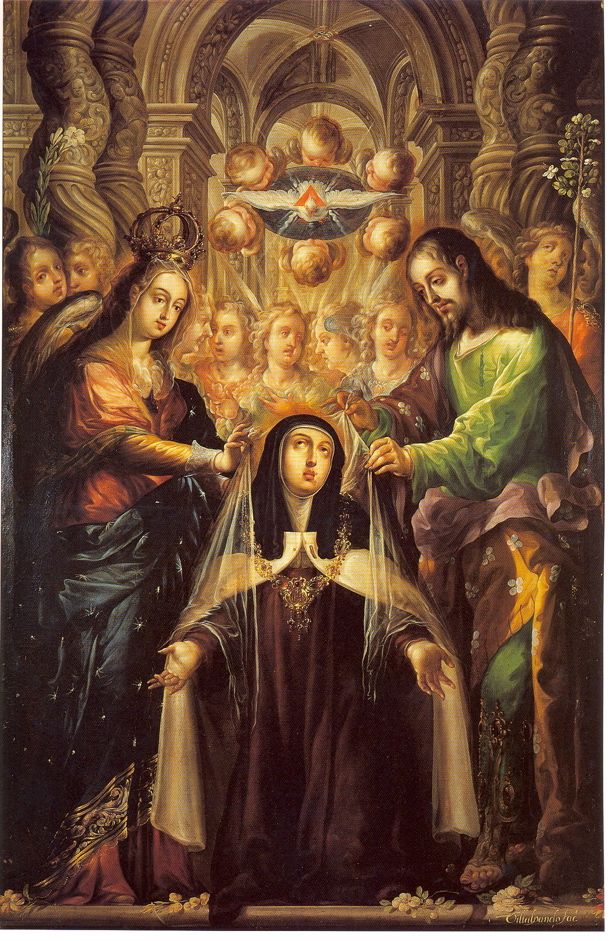 |
| The Holy Mother St. Teresa receives a veil and necklace from Our Lady and St. Joseph |
Here are the spiritual maxims of the Holy Mother St. Teresa, for her nuns.
1. Untilled ground, however rich, will bring forth thistles and thorns; so also, the mind of man.2. Speak well of all that is spiritual, such as religious, priests, and hermits.3. Let thy words be few when in the midst of many.4. Be modest in all thy words and works.5. Never be obstinate, especially in things of no moment.6. In speaking to others be always calm and cheerful.7. Never make a jest of anything.8. Never rebuke any one but with discretion, and humility, and self-abasement.9. Bend thyself to the temper of whomever is speaking to thee: be merry with the mirthful, sorrowful with the sad: in a word, make thyself all things to all, to gain all.10. Never say anything thou hast not well considered and earnestly commended to our Lord, that nothing may be spoken which shall be displeasing unto Him.11. Never defend thyself unless there be very good reasons for it.12. Never mention anything concerning thyself which men account praiseworthy, such as learning, goodness, birth, unless with a hope of going good thereby, and then let it be done with humility, remembering that these are gifts of God.
Sunday, October 8, 2023
Life is Easier with Mary as Our Spiritual Mother
From Ray Sullivan at Catholic Stand:
Spiritual reading led me to the wonderful writings of St. Louis de Montfort. This great French saint of the 18th century wrote several great books concerning the Mother of God, like “The Secret of the Rosary,” “The Secret of Mary,” and “True Devotion to Mary.” The common thread through them all is that if you adopt Mary as your mother, as Jesus said to His beloved disciple (we are ALL beloved disciples of Jesus) from the cross in John 19:27, then the road to find Jesus is faster, smoother, and always infallible. Why? Because Mary’s last recorded words in the Bible were, “Do whatever He tells you.” The ultimate meek and humble Mary, whom God exalted over every other human being ever created to be His earthly mother, will never lead you astray. She will always, always, always, lead you to Jesus faster and better than any of your own human efforts. Her supernatural guidance and protection from the devil are the ultimate flak jacket to protect you from his satanic wiles and temptations. Genesis 3:15 says that “The Woman” is at enmity with satan, which means a lifelong hatred. This enmity between Mary and the devil can be ours as well, if and only if we adopt Mary as our spiritual mother. Otherwise, the devil has a much easier time of it when it comes to leading us astray. Been there, done that. (Read more.)
Saturday, October 7, 2023
The Name of the Rosary
 While editing and rewriting sections of my novel about medieval France I researched the development of the rosary. I came across a fascinating blog called Paternosters which was a name given to prayer beads in the medieval period. Here is an article about the origins of the the word "rosary" which I found quite interesting. To quote:
While editing and rewriting sections of my novel about medieval France I researched the development of the rosary. I came across a fascinating blog called Paternosters which was a name given to prayer beads in the medieval period. Here is an article about the origins of the the word "rosary" which I found quite interesting. To quote:To get back to beads, however, traces of the earlier meaning of bid/bede as "a prayer" still remain. For instance, a wealthy patron in the Middle Ages may have supported poor bedesmen, who had promised to pray for the patron, and may have provided a bedehouse for bedesmen or bedeswomen to live in. Likewise, “bidding one’s bedes” in the Middle Ages does not so much mean praying with a literal string of beads, as it means praying for one’s bedes, that is, the people or requests one is obliged to pray for.
The word “rosary” originally meant a garden devoted to the growing of roses (c1440, “This mone is eke rosaries to make, with setes [seats]”)....Probably both the rose-garden concept and the book title contributed to the idea of referring to a collection of written prayers and devotions as a (metaphorical) rosary, such as the 1526 Rosary of Our Savyour Jesu or the 1533 Mystik sweet Rosary of the faytheful soule.
From here it was a short step to applying the term “rosary” to the specific prayer practice we have been discussing, including its string of beads.
Other European languages also call the rosary by a name referring to roses. In German it is a rosenkranz, in French a rosaire, in Italian and Spanish a rosario, and in Hungarian it is a rózsafüzért (literally a “rose string”). However in Austria it is more commonly a betschnur (“prayer string”) and in France, often a chapelet.
Friday, September 29, 2023
Michaelmas
 Happy Michaelmas Day!
Happy Michaelmas Day!To St. Michael in Time of Peace
Michael of the Morning,
Michael of the Army of the Lord,
Stiffen thou the hand upon the still sword, Michael,
Folded and shut upon the sheathed sword, Michael,
Under the fullness of the white robes falling,
Gird us with the secret of the sword.
When the world cracked because of a sneer in Heaven,
Leaving out for all time a scar upon the sky,
Thou didst rise up against the Horror in the highest,
Dragging down the highest that looked down on the Most High:
Rending from the seventh heaven the hell of exaltation
Down the seven heavens till the dark seas burn:
Thou that in thunder threwest down the Dragon
Knowest in what silence the Serpent can return.
Down through the universe the vast night falling
(Michael, Michael: Michael of the Morning!)
Far down the universe the deep calms calling
(Michael, Michael: Michael of the Sword!)
Bid us not forget in the baths of all forgetfulness,
In the sigh long drawn from the frenzy and the fretfulness
In the huge holy sempiternal silence
In the beginning was the Word.
When from the deeps of dying God astounded
Angels and devils who do all but die
Seeing Him fallen where thou couldst not follow,
Seeing Him mounted where thou couldst not fly,
Hand on the hilt, thou hast halted all thy legions
Waiting the Tetelestai and the acclaim,
Swords that salute Him dead and everlasting
God beyond God and greater than His Name.
Round us and over us the cold thoughts creeping
(Michael, Michael: Michael of the battle-cry!)
Round us and under us the thronged world sleeping
(Michael, Michael: Michael of the Charge!)
Guard us the Word; the trysting and the trusting
Edge upon the honour and the blade unrusting
Fine as the hair and tauter than the harpstring
Ready as when it rang upon the targe.
He that giveth peace unto us; not as the world giveth:
He that giveth law unto us; not as the scribes:
Shall he be softened for the softening of the cities
Patient in usury; delicate in bribes?
They that come to quiet us, saying the sword is broken,
Break man with famine, fetter them with gold,
Sell them as sheep; and He shall know the selling
For He was more than murdered. He was sold.
Michael, Michael: Michael of the Mustering,
Michael of the marching on the mountains of the Lord,
Marshal the world and purge of rot and riot
Rule through the world till all the world be quiet:
Only establish when the world is broken
What is unbroken is the Word.
Saturday, September 23, 2023
Martyrs
From Catholicism:
The Church was born out of blood and persecution. As the traditional saying credited to Tertullian went: “The blood of the martyrs is the seed of Christians.” All of the Apostles were martyrs, including Saint John, who, although submerged into boiling oil during the persecution of Emperor Domitian, was miraculously preserved from death and bodily harm. The fact that he was willing to die for Christ (tradition has it that he also felt the pain) merited for him the martyr’s crown. All of the saints named in the canon of the Mass were martyrs, except for Our Lady, whose unique, un-bloody martyrdom was like a sword piercing her soul. The first thirty-three popes were martyrs. It was revealed to Saint Alphonsus Maria de Liguori that in the first three centuries of persecution, from the Edict of Nero (which began the persecutions) in the year 66 to the Edict of Milan (which ended them) in 313 eleven million of the faithful were martyred for their Faith in Christ. Finally, in the last days, during the reign of antichrist, the faithful will endure the worst of all persecutions, and martyrs will usher in the final triumph of the Church, which will precede the end of the world.
Truly, then, we belong to a Church of martyrs. Every age has contributed its share, some ages many more than others, but there have been martyrs at all times, some of whom are known only to God, His angels, and His saints. We have our martyrs today and we shall surely have them tomorrow.
Some of the victims of Communism who were spared the shedding of blood unto death suffered more than the martyrs, even thirty years of prison or in labor camps, under the most inhuman of conditions. In Communist China, to be a bishop loyal to the pope, guaranteed a prison sentence with at least mental torture, or death.
Why does God require so much blood from His servants? Why such a price? Why so much suffering?
Could it be that God wishes to exact from His closest disciples that greatest of all acts of love which Jesus was Himself to manifest for all men: “Greater love than this no man hath, that a man lay down his life for his friends” (John 15:13)?
At the Last Supper, in anticipation of His Passion and Death, Our Lord was very anxious to assure His Apostles that they were now His intimate friends: “I will not now call you servants: for the servant knoweth not what his lord doth. But I have called you friends: because all things whatsoever I have heard of my Father, I have made known to you” (John 15:15).
It was in His Passion and Death that Christ manifested how great was His love for men. “In this we have known the charity of God, because he hath laid down his life for us: and we ought to lay down our lives for the brethren” (1John 3:16). So, too, with the martyrs, in their passion and death they manifest how great a love they have for their Savior.
Nevertheless, many of the holiest of saints, even though they desired the crown of martyrdom, were not asked to make that sacrifice. Rather their whole lives were continual oblations of self-sacrifice. Think of Saints Francis of Assisi or Teresa of Avila. Then, there are the stigmatists, such as Saint Padre Pio, who suffered a martyrdom in his hands, feet, and side, on the cross every day, but without death, for fifty years. (Read more.)
Wednesday, September 20, 2023
Novena to St. Michael
 Let us unite in praying together the Novena to St. Michael the Archangel.
Let us unite in praying together the Novena to St. Michael the Archangel.Saint Michael the Archangel, loyal champion of God and His people, I turn to you with confidence and seek your powerful intercession. For the love of God, Who made you so glorious in grace and power, and for the love of the Mother of Jesus, the Queen of the Angels, be pleased to hear my prayer. You know the value of my soul in the eyes of God. May no stain of evil ever disfigure its beauty. Help me to conquer the evil spirit who tempts me. I desire to imitate your loyalty to God and Holy Mother Church and your great love for God and people. And since you are God's messenger for the care of His people, I entrust to you this special request: (Mention your request).
Saint Michael, since you are, by the Will of the Creator, the powerful intercessor of Christians, I have great confidence in your prayers. I earnestly trust that if it is God's holy will my petition will be granted.
Pray for me, Saint Michael, and also for those I love. Protect us in all dangers of body and soul. Help us in our daily needs. Through your powerful intercession, may we live a holy life, die a happy death, and reach heaven where we may praise and love God with you forever.
Amen.
Tuesday, September 19, 2023
The Great Monarch, the "Warning" and the Duration of the Period of Peace
From Unveiling the Apocalypse:
One of the oldest prophecies of the Great Monarch is found in the Apocalypse of Methodius, which also foretells the appearance of the sign of the cross before the Last Judgement. Ironically, this prophecy is also related to the central subject matter of Christine Watkins' book The Warning: Testimonies and Prophecies of the Illumination of Consciences, which has recently popularised Mallett and O'Connor's writings due to her endorsement of the Countdown to the Kingdom website:…the Cross on which our Lord Jesus Christ hung for the common salvation of all will begin to appear before him at his coming to convict the lack of faith of unbelievers… When the Cross has been lifted up on high to heaven, the king of the Romans will directly give up his spirit. Then every principality and power will be destroyed that the Son of Perdition may be manifest.According to Church Tradition, the Great Monarch will bring about the restoration the Church after a period of desolation, which I argue in my book Unveiling the Apocalypse: The Final Passover of the Church, is related to the current apostasy we are experiencing due to the period of the unbinding of Satan at the end of the "thousand years". After the Great Monarch brings about the renovation of the Church, the prophetic tradition tells us that he will lay down his crown on the Mount of Olives just immediately before the appearance of the Antichrist:Some of our teachers say that a King of the Franks will possess the entire Roman Empire. He will be the greatest and last of all Monarchs. After having wisely governed his kingdom, he will go into Jerusalem and will lay his sceptre and his crown upon the Mount of Olives. Immediately afterwards, Antichrist will come. (Adso of Montier-en-Der, De ortu et tempore Antichristi)The only Church approved private revelation to give some indication of the duration of the period of peace is Melanie's 1849 version of the Secret of La Salette, which explicitly states that this period of renewal will not last long before the appearance of the Antichrist, and similarly connects the period of the restoration of the Church with the reign of the Great Monarch...(Read more.)
More HERE.
Here is a really interesting interview with author Charles Coulombe in which the Great Monarch is mentioned.
Sunday, September 17, 2023
St. Albert of Jerusalem
Albert, by the grace of God, Patriarch of Jerusalem, to his beloved sons, Brocard and the other religious hermits who live under his obedience, near the fountain of Elias, on Mt. Carmel, health in the Lord, and the blessings of the Holy Spirit.Thus opens the primitive Rule of St. Albert, one of the four great Rules of the Roman Church. Written for the early Carmelites, it is the shortest of all the Rules, because minimal attention is placed on material things and the affairs of the world. The heavenly strivings of the Hermit Brothers of Our Lady of Mt. Carmel are thereby emphasized. St Albert's exhortations on solitude, silence, poverty, obedience, fasting, and manual labor are all well-supported by his thorough knowledge of Sacred Scripture. Although the Rule was written for the hermits, its charism can be lived by any who seek to live a life of contemplation, even amid the cares of this world. The heart of the Rule is that the Carmelite should be "meditating day and night on the Law of the Lord, and watching in prayer." Is not our striving for interior recollection an attempt to mirror this precept?
St. Albert of Vercelli, an Italian by birth, was sent to Palestine by Pope Innocent III because his wisdom and diplomacy were needed in that turbulent region. As the Latin Patriarch, St. Albert gained the respect of the eastern Christians and even of the Moslems. As an Augustinian Canon of the Holy Cross, St. Albert knew the religious life first hand. Between 1206 and 1210 he composed the Rule for the Carmelite hermits. On September 14, 1214, the Feast of the Exaltation of the Holy Cross, St. Albert was stabbed to death by a disgruntled, immoral cleric whom he had deposed. St. Albert's feast on the Carmelite calendar is September 17.
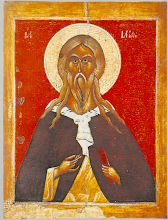
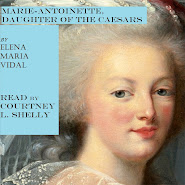


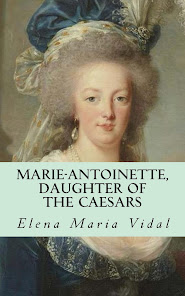
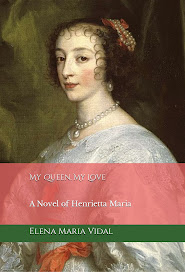











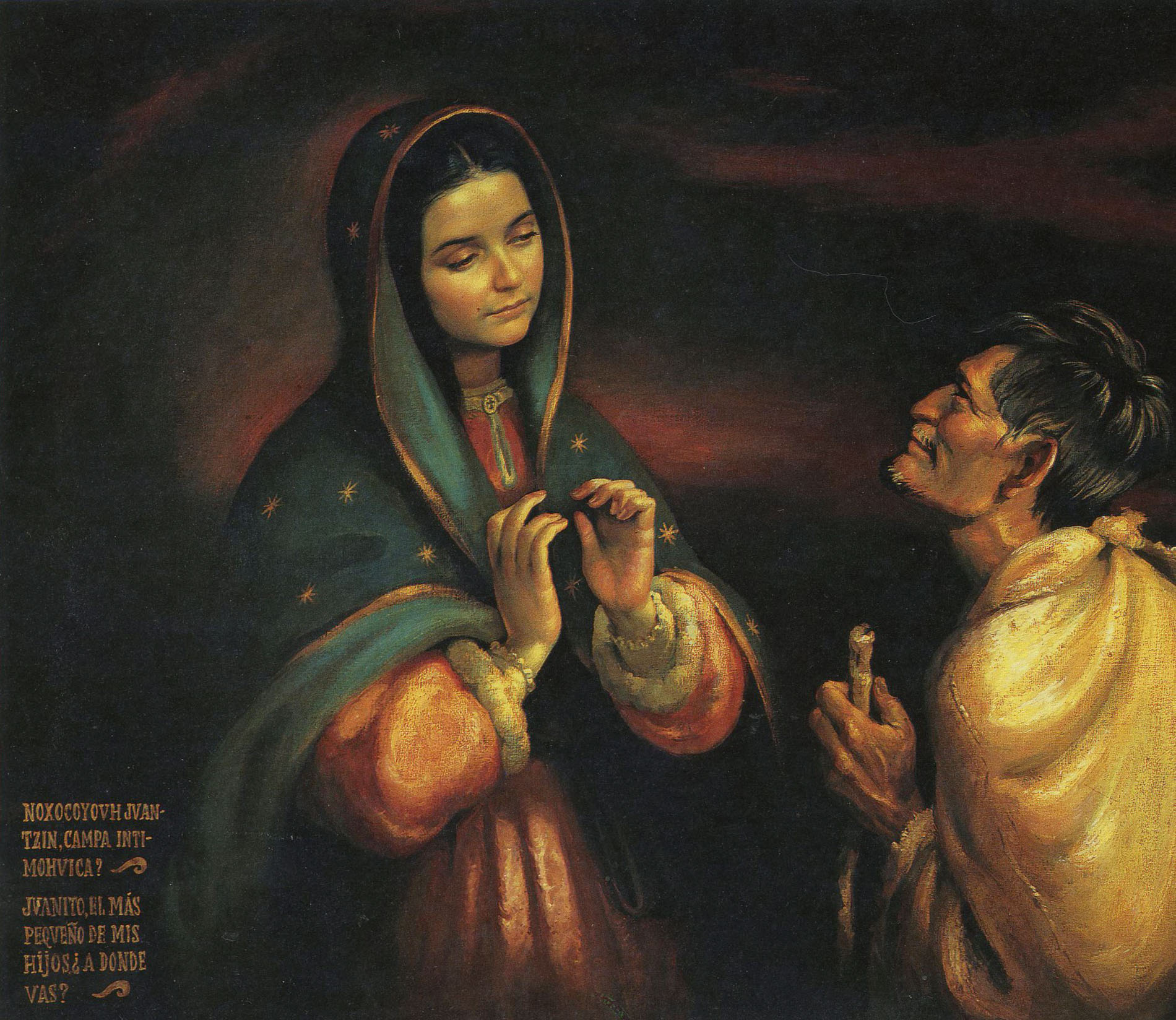



_-_Sv._Mikul%C3%A1%C5%A1.jpg/220px-Jaroslav_%C4%8Cerm%C3%A1k_(1831_-_1878)_-_Sv._Mikul%C3%A1%C5%A1.jpg)

